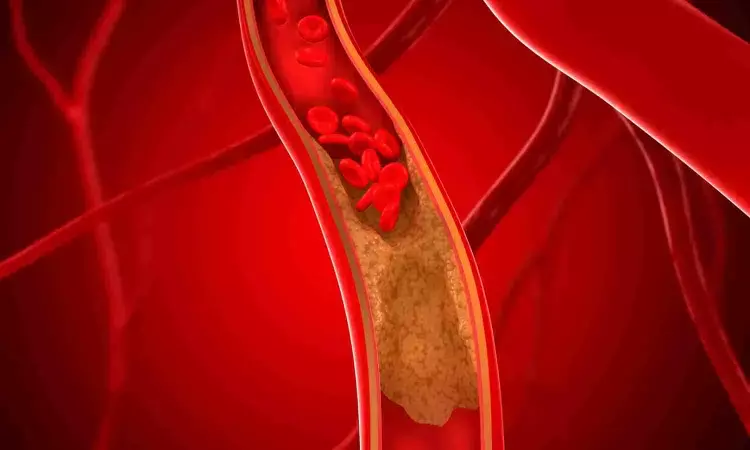- Home
- Medical news & Guidelines
- Anesthesiology
- Cardiology and CTVS
- Critical Care
- Dentistry
- Dermatology
- Diabetes and Endocrinology
- ENT
- Gastroenterology
- Medicine
- Nephrology
- Neurology
- Obstretics-Gynaecology
- Oncology
- Ophthalmology
- Orthopaedics
- Pediatrics-Neonatology
- Psychiatry
- Pulmonology
- Radiology
- Surgery
- Urology
- Laboratory Medicine
- Diet
- Nursing
- Paramedical
- Physiotherapy
- Health news
- Fact Check
- Bone Health Fact Check
- Brain Health Fact Check
- Cancer Related Fact Check
- Child Care Fact Check
- Dental and oral health fact check
- Diabetes and metabolic health fact check
- Diet and Nutrition Fact Check
- Eye and ENT Care Fact Check
- Fitness fact check
- Gut health fact check
- Heart health fact check
- Kidney health fact check
- Medical education fact check
- Men's health fact check
- Respiratory fact check
- Skin and hair care fact check
- Vaccine and Immunization fact check
- Women's health fact check
- AYUSH
- State News
- Andaman and Nicobar Islands
- Andhra Pradesh
- Arunachal Pradesh
- Assam
- Bihar
- Chandigarh
- Chattisgarh
- Dadra and Nagar Haveli
- Daman and Diu
- Delhi
- Goa
- Gujarat
- Haryana
- Himachal Pradesh
- Jammu & Kashmir
- Jharkhand
- Karnataka
- Kerala
- Ladakh
- Lakshadweep
- Madhya Pradesh
- Maharashtra
- Manipur
- Meghalaya
- Mizoram
- Nagaland
- Odisha
- Puducherry
- Punjab
- Rajasthan
- Sikkim
- Tamil Nadu
- Telangana
- Tripura
- Uttar Pradesh
- Uttrakhand
- West Bengal
- Medical Education
- Industry
PAD Patients with Atrial Fibrillation at Increased Cardiac , mortality: Study

New research from Intermountain Health in Salt Lake City finds that patients diagnosed with peripheral arterial disease (PAD) who also have atrial fibrillation (AFib) face a significantly higher risk of major adverse cardiovascular events (MACE).
The Intermountain study analyzed long-term data of Intermountain Health patients with PAD and found that AFib was present in approximately one in four PAD patients, making this combination far more common than previously recognized.
More importantly, Intermountain researchers found the presence of AFib nearly doubles the risk of major adverse cardiovascular events in patients compared to PAD alone.
Irregular heart rhythms are called arrhythmias. AFib is the most common arrhythmia that often, can become rapid. This can result in symptoms like palpitations, fatigue, and shortness of breath as the heart’s upper chambers, called atria beat out of sync with the lower “pumping” chambers, called ventricles.
AFib can lead to blood clots in the heart, increasing the risk of stroke. The condition also increases the risk of heart failure, and other heart-related complications. Many people don't notice symptoms.
PAD, like coronary artery disease, develops from a buildup of deposits in the arteries, but occurs in the extremities. PAD is estimated to affect nearly 8-12 million US adults.
In PAD, the legs or arms – usually the legs – don't get enough blood flow to keep up with demand. This may cause leg pain when walking, called claudication, and other symptoms.
While treatments for CAD and PAD are similar, including exercising, eating healthy foods, and not smoking or using tobacco, unlike CAD, individuals with PAD have higher risk of heart attacks, strokes, and amputations.
Researchers say the presence of AFib further amplifies risks of events.
“This is a stark reminder that PAD is not just a limb-threatening disease – it’s a marker of widespread atherosclerosis,” said Viet Le, DMSc, MPAS, PA-C, an advanced practice clinician and cardiovascular researcher at Intermountain Health and principal investigator of the study. “We found that when atrial fibrillation is added to the mix, the risk of heart attack, stroke, and death escalates significantly. Clinicians must screen for AFib in PAD patients and aggressively manage both conditions.”
Key Findings of the study:
• PAD patients without AFib already face a high event rate: 12% experience a major cardiovascular event within the first year, and 25% within three years.
• When AFib is present, MACE occurrences rise dramatically: 25% in the first year and 46% within three years.
• Major adverse cardiovascular events include myocardial infarction (heart attack), stroke, hospitalization for heart failure, unstable angina, or death due to cardiovascular events.
Researchers say the findings underscore the need for better adherence to screening and treatment protocols. Despite existing guidelines, only 35% of PAD patients receive optimal medical therapy, including blood pressure control, statins, aspirin, and smoking cessation support.
"Both conditions derive from plaque build-up in femoral and arterial arteries," said Le. "Atrial fibrillation should be assessed in all peripheral arterial disease patients, and aggressive preventative treatment should be implemented."
Reference: Patients with peripheral arterial disease who also have atrial fibrillation face significantly higher risk for cardiac events including death, Intermountain Healthcare, Meeting: American Heart Association Scientific Sessions 2025
Dr Kamal Kant Kohli-MBBS, DTCD- a chest specialist with more than 30 years of practice and a flair for writing clinical articles, Dr Kamal Kant Kohli joined Medical Dialogues as a Chief Editor of Medical News. Besides writing articles, as an editor, he proofreads and verifies all the medical content published on Medical Dialogues including those coming from journals, studies,medical conferences,guidelines etc. Email: drkohli@medicaldialogues.in. Contact no. 011-43720751


